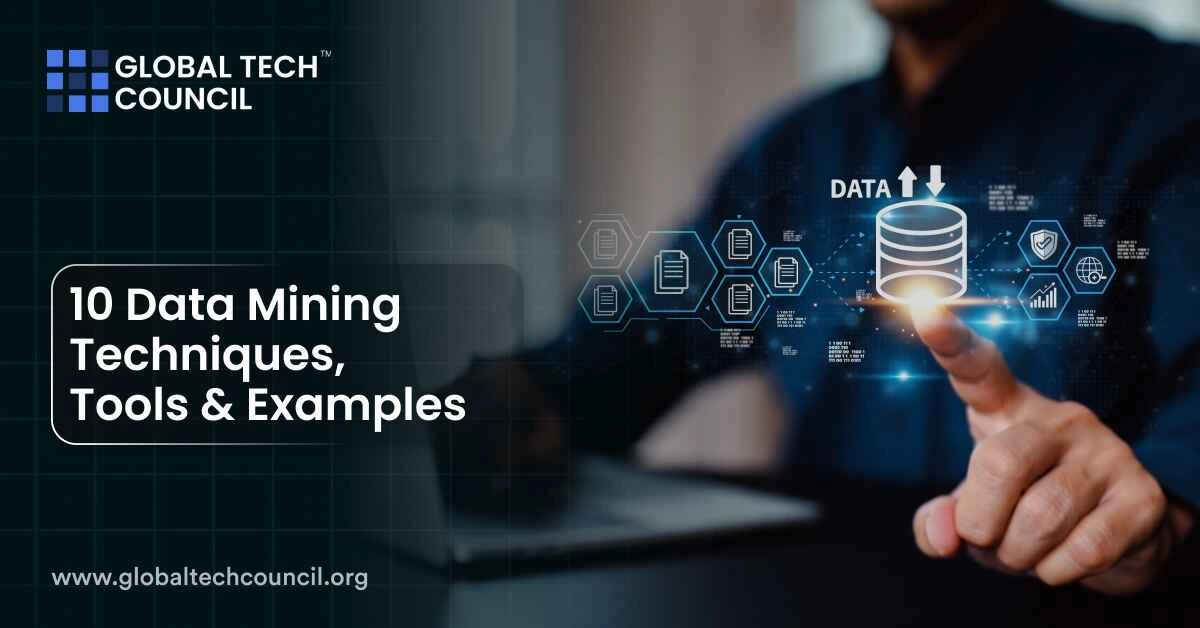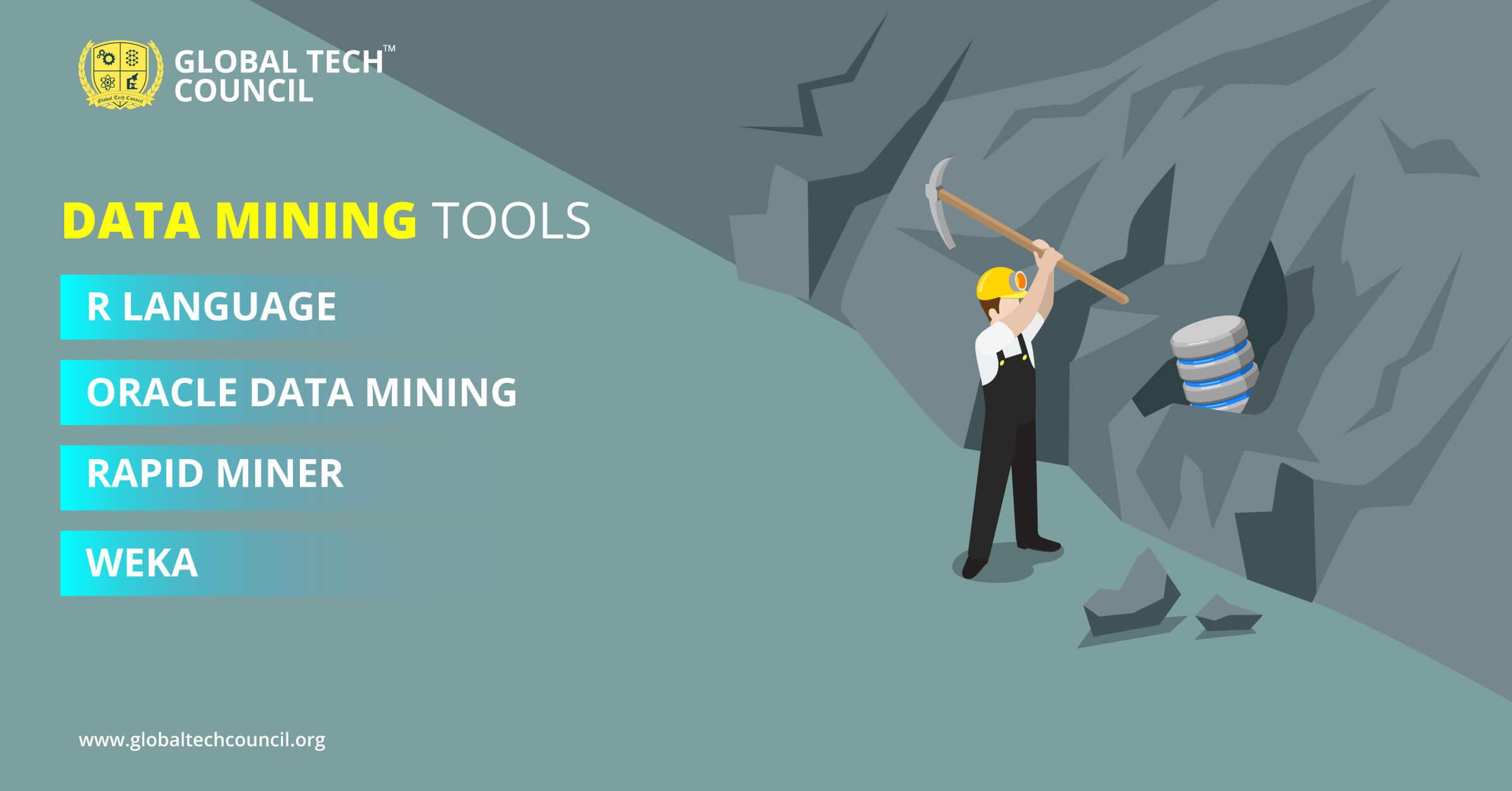
A massive amount of data is generated today by the organizations. The analysis of such humongous data requires knowledge of data mining, its techniques, and multiple tools used to refine that data and extract information out of it.
Learning Of Blog
- What is Data Mining?
- 10 Data Mining Techniques
- DATA Mining Tools
What is Data Mining?
Data mining in large data sets searches for secret, accurate, and potentially useful patterns. Data Mining is about finding between the data unsuspected / previously unknown relationships. It is multidisciplinary, using machine learning, analytics, AI, and database technologies. The insights obtained from Data Mining can be used for marketing, identification of fraud and scientific discovery, etc.
There are various certification courses are available to acquire Data Mining skill, some of them are data analytics certification, big data certification course, Big Data Certification, data science certification, data science for beginners.
10 Data Mining Techniques
-
Outlier Direction
For certain instances, you can’t easily interpret the data collection by merely understanding the underlying trend. You must also be able to spot anomalies in the data or outliers.
For example, You’ll want to investigate the spike and figure out what drove it, so you can either reproduce or bring your public into the cycle if your buyers are almost entirely male. Still, there are significant spikes in female purchasers during a stranger week in July.
-
Associations
The association is related to trends but is unique to variables that are dependently connected. In this case, you should search for particular events and characteristics which are closely related to another occurrence.
For example: such as when your customers purchase a particular item, they also purchase a second similar item. This is also used to suggest on online platforms like ” People also bought ” this item.
-
Clustering
Clustering is somewhat similar to sorting, but grouping together pieces of knowledge on the basis of its similarities, For Example: To bundle your customer demographics into different bundles, based on the amount of disposable income you have or how much you choose to shop in your store.
-
Classifications
This analysis is used to obtain essential and appropriate data and metadata information. This method of data mining assists in the classification of data into various groups. It is a more complex data mining technique that forces you to collect various attributes into distinguishable categories, and then to draw more conclusions or serve a function.
For example, You might, for instance, identify them as “low,” “medium,” or “high” loans if you analyze the financial history or purchase records of each borrower. We will then be used to learn more about these customers.
-
Regression
Regression is used primarily for forecasting and modeling purposes, considering the existence of other variables, to determine the likelihood of a particular variable.
For example, A certain amount, based on other factors as availability, market demand, and competition, may be predicted. The main goal of regression is to help you identify the exact relationship between two (or more) variables in a given collection of data.
-
Data Warehousing
Without data warehousing, data mining is incomplete. Data storage is a method used to store vast volumes of organized data safely. The preservation of data is not only a preservation problem but also for data maintenance and security. The business of a large scale requires Data warehousing to store the data safely.
-
Visualization
Graphs, charting, and graphs, and digital images are a process of tableting of data Visualization This allows businesses to quantify and improve their growth chart. You may also compare your growths to your rivals and assess your market place. Data visualization will enable companies to make informed decisions because they are aware of a simple, well-defined representation of data.
-
Statistical Techniques
As its name suggests, the mean, mode, and median of the data are determined to predict future trends. For businesses, statistical analysis is instrumental as it paves the way for their future profits. Using statistics, companies can make strategic choices, measure their ROIs, and formulate a marketing plan that takes into account potential trends through data.
-
Tracking Patterns
One of the most critical strategies for data mining is to find trends in the data sets. It typically detects a specific aberration of the information that happens periodically or fluctuation of a particular variable over time. For example, You may note that a specific product tends to increase sales shortly before your holidays or that hot weather brings more customers to your website.
-
Sequential Patterns
This implies that the sequence of the data is known. Sequential analyzes are also useful for businesses because they can track selling trends. It may also assist organizations in learning about the sequence of activities taking place in their databases.
DATA Mining Tools
Most commonly used data mining tools are given below:
R Language
R language is a statistical and graphical open-source tool. R has a broad range of traditional, mathematical, time-series, classification, and graphical methods. It provides effective data transmission and storage.
Oracle Data Mining
Oracle Data Mining is a feature of the Oracle Advanced Analytics Database, which is commonly called ODM. This data mining method gives a detailed analysis and forecasts to data analyzers. It helps predict the actions of our customers, builds customer profiles, etc.
In the last five years, advancements in technology have put new heights to beat by data mining. Great data professionals with a high technology demand are investing some time in the growth of your data mining skills in the technical landscape. Training and online certification like data analytics certification, big data certification course, Big Data Certification, data science certification, data science for beginners can help to acquire these skills.
Rapid Miner
This is an open-source ready to use tool with the features of advanced analytics. This tool is written in Java language and incorporates all the principal functions of data mining like data cleaning, processing, visualization, and analysis. Built-in templates are used, which provide a better experience to the users.
Weka
This is an advanced tool for data mining that uses machine learning algorithms applied directly to the dataset. It contains all the functions of data mining along with association rules. This tool is mainly used to develop machine learning schemes.
Conclusion
Knowledge of Data mining, its techniques, and multiple tools used to process data is necessary for extracting the right information. The ten techniques listed above provide you what path the correct data extraction method would take, and the tools give you the way to do it. This ultimately helps users to get insight from the data.
